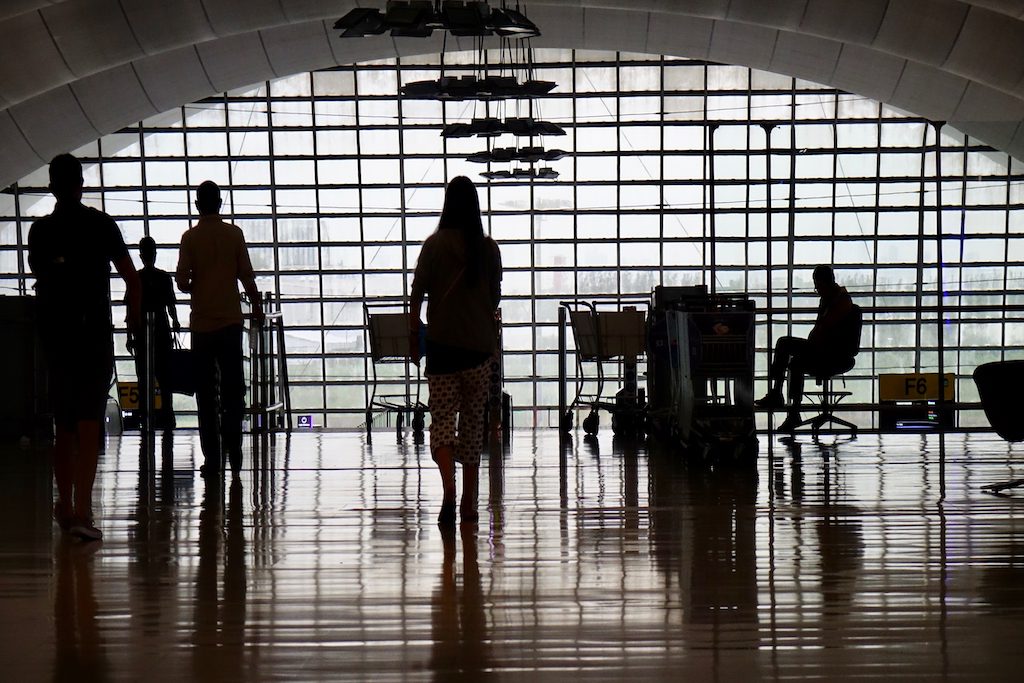Skift Take
Remember travel bubbles? Three months ago, they were a buzzword. Now they're barely talked about. What happened in between?
It was three months ago — a lifetime in pandemic terms — that the travel industry seemed confident that so-called travel bubbles could be the saving grace of the summer tourism.
When Skift covered the idea in early May, countries in Asia, Europe, as well as Australia and New Zealand were considering some form of it. The concept was that countries that shared regional borders and similar rates of infection could allow cross border travel without the need for quarantine. The hope was these reciprocal agreements could get tourism out of its dormant state.
But since then, the idea itself seems to have fallen from grace. Last week, Thailand shelved its plans for a travel bubble after a rise in cases across Asia. New Zealand Prime Minister Jacinda Arden said plans for an Australia-New Zealand bubble are paused indefinitely after a spike of cases in Australia.
Meanwhile, Britain has proceeded with its whack-a-mole approach to international travel, imposing quarantines at a moment’s notice, while in the EU, the bloc’s attempt to reopen its external borders cohesively to a regularly-updated list nations has had mixed results. (Croatia, for example, is allowing Americans to visit if they test negative 48 hours prior to arrival.)
So why did travel bubbles seem to fail? As with much relating to Covid-19, the answer seems to lie in a mixture of epidemiological and political factors. And, of course, the fact that no one can predict the future.
The first reason may be the simplest and most depressing: The virus, even once beaten back, has proved perhaps more difficult to control than governments thought when first thinking about reopening travel in May and June. It’s not a simple matter of getting cases down and then aligning with countries in a similar position. As the last three months have shown in Europe and Asia, once cases are down, there’s no guarantee they will stay that way. Europe is seeing rising cases across Spain, Greece, and France (though not nearly as high as in March and April.)
Further complicating matters is that different governments tolerate very different levels of risk within their borders. Consider New Zealand, which this week introduced new lockdown measures in Auckland after just four new cases. For travel bubbles to really work, participating countries need not only be at the same level of infection, but also share the same level of government responsiveness and hyper-vigilance to rising rates of infection. That has proven near impossible in a chaotic, fast-changing, and politicized pandemic.
The World Travel and Tourism Council endorsed travel bubbles as recently as late June, saying at the time they would “help limit testing requirements for travelers and support efforts by governments and private businesses working in partnership together to stimulate traveller demand.”
When asked by Skift for insight onto why travel bubbles hadn’t seemed to catch on, CEO Gloria Guevara said that the bubbles had largely been replaced by the concept of air corridors. The latter is a similar idea to travel bubbles, but not limited to a geographical region or countries with shared borders.
“Cases have spiked in different countries at different times, forcing governments to react quickly in this fast-moving and dynamic situation to re-impose restrictions such a quarantines where necessary to control the spread of Covid-19,” Guevara said. “Unfortunately this has had the effect creating a climate of uncertainty for many holiday makers and travelers, which has stalled the recovery of the Travel & Tourism sector. That’s why we don’t support blunt quarantines and instead recommend robust test and trace regimes and strong coordination among governments to rebuild confidence to travel safely.”
Britain’s approach, which began in early July, of removing travel restrictions for lower risk countries and expecting reciprocity from the countries on that list with similar infection rates could loosely be best described as an “air corridor.” However the government’s habit of changing its mind at a moment’s notice has made the notion of reciprocity less present. The reality may be that many tourism-dependent European countries have been so reliant on the powerful source market that is British holiday makers, they’re putting up with the uncertainty for now.
In Asia, the political situation is no simpler. Gary Bowerman, a tourism analyst focused on Asia, said that despite hope that bubbles would work well in Asia — where competent governments have been more effective at getting cases down — that has not been the case. Spikes in Beijing, China and Da Nang, Vietnam spooked many Asian countries like Malaysia and Thailand which had done well at flattening the curve, and wanted to keep it that way, Bowerman said. Far from being a “short-term panacea to help tourism rebuild gradually” he said, “the travel bubbles floated in Asia are complex jigsaws.”
In addition to the fact that country A needs to be happy with all the passports country B is allowing in, and vice versa, “bubble partners [also] need to be strong source markets for inbound travel and have good flight connectivity — yet protracted border closures have seen most of the airlines that would be involved shut down not just capacity, but put pilots, cabin and engineering crew on furlough, or even made redundant. Some airlines are barely solvent.”
Bowerman also points out that even if bubbles could get off the ground, the demand is not guaranteed. “So in the unlikely event that travel bubbles were to get off the ground, the levels of travel demand are extremely hard to predict, and would most likely not be anywhere near worth staking the necessary political capital.”
The Daily Newsletter
Our daily coverage of the global travel industry. Written by editors and analysts from across Skift’s brands.
Have a confidential tip for Skift? Get in touch
Tags: coronavirus, tourism, travel bubbles, wttc
Photo credit: Who's allowed in — and who's not? Rajesh India / Flickr
